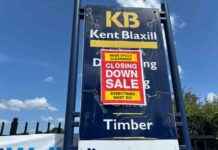A decision to allow a wall surrounding a housing development of 238 homes in Kelvedon, despite being deemed “unacceptable” by the Braintree Council, has been made at appeal.
The current enclosure around the boundary of the development consists of brick screen walls about 1.8 meters high along the southern boundary, with sections of horizontal acoustic timber fencing. The council has expressed their disapproval of this method of enclosure, stating that a brick wall would be more fitting with the common characteristics of Kelvedon High Street.
In response to plans for wood paneling on the acoustic fence boundary, the council deemed it unacceptable, insisting on a brick wall as the boundary treatment. They believe that a brick wall is necessary where a private space meets a publicly accessible one, especially since the car parks are located at the rear of the development.
On the other hand, the inspector noted that while the current boundary treatment is not consistent in appearance, it effectively encloses the site. The timber panels provide a softer appearance that blends well with the natural environment, while also offering security, screening, and acoustic attenuation.
The council argued that a brick wall would offer better acoustic mitigation, but the inspector found little evidence to support this claim. He believes that the current acoustic timber treatment is sufficient and removing condition 22 would not harm the character and appearance of the area. The proposed details, including the mix of wall sections, piers, and timber panels, would ensure the satisfactory development of the site in terms of visual amenity.
Overall, the decision to uphold the wall surrounding the housing development may have been controversial, but it was deemed necessary for security and visual appeal. The inspector’s assessment of the current boundary treatment and the potential impact of changing it played a crucial role in allowing the appeal. While the council may have preferred a different approach, the inspector’s findings supported the suitability of the existing enclosure.













